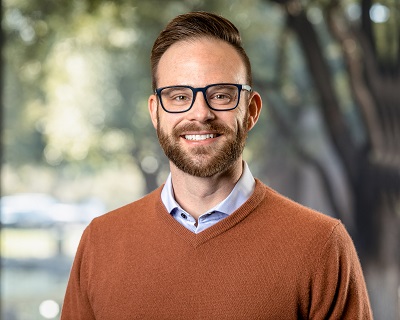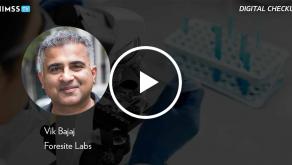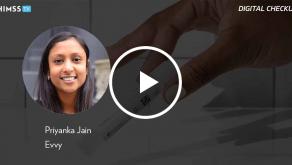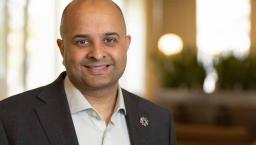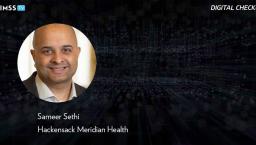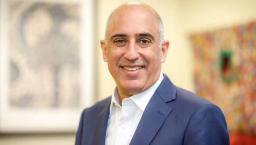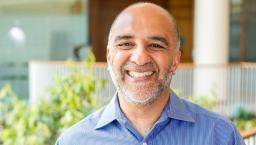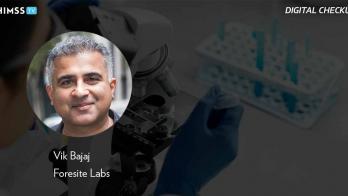Cloud-based EHR helps NorthSight Recovery make big strides on SDOH

Photo: NorthSight Recovery
NorthSight Recovery is an evidence-based behavioral health agency in Arizona specializing in complex mental health diagnoses, co-occurring problematic substance abuse and social determinants of health. It approaches treatment through data-driven modeling powered by analytics.
THE PROBLEM
"NorthSight Recovery was founded with the intent of prioritizing technology and tools alike," said Jeremy Bloom, CEO of NorthSight Recovery. "Healthcare is years behind other industries in leveraging technology and data to progress innovation and efficiency.
"This is further exacerbated when it comes to behavioral health, now more than ever, with the challenges of addressing the U.S. mental health crisis compounded by record opioid addictions across Arizona and America at large," he continued.
"There are many reasons for this disparity, but behavioral health’s absence from the incentives provided by the Health Information Technology for Economic and Clinical Health Act of 2009 certainly left many facilities at the back of the line for technology and funding."
NorthSight's facilities initially manually tracked outcomes and lacked an integrated data platform. This reality created analytical obstacles to answering basic operational and clinical questions. For example, social determinants of health drive as much as 50% of the county-level variation in health outcomes.
"And factors such as housing and transportation are significant in substance use disorder treatment," Bloom explained. "Studies indicate housing and case management lower overall SUD treatment duration by 7.5 days, representing significant cost savings and improvement in care experience.
"The problem: We needed to track these critical SDOH factors and link them to outcomes," he continued. "Paper records are inefficient, and we couldn't quantify or objectively examine the data. And as a facility that prides itself on helping clients build solid foundations for long-term recovery, we were impeded in our ability to scale evidence-based treatment approaches and identify those most in need of our supportive housing options."
PROPOSAL
Vendor Sunwave Health proposed its cloud-based, substance use disorder EHR technology. It included an advanced data approach that absorbs, connects and cleans data from multiple sources, Bloom said.
"When data is missing or of lower quality, the solution can leverage advanced data science algorithms to account for the missing pieces and help identify anomalies," he explained. "Quite simply, the platform manages the entire process, from lead capture to admissions to ongoing patient engagement.
"Implementing the cloud-based EHR technology allows us to successfully work toward whole-person health and increasingly accountable care models as behavioral health faces growing scrutiny and potential financial penalties for underperformance and underreporting."
Jeremy Bloom, NorthSight Recovery
"With multiple modules that can work together, all of our data is in the same place with the same data source and ease of use," he continued. "This one-source implementation has helped us achieve dynamic reporting and insights across the entire treatment journey."
MEETING THE CHALLENGE
NorthSight Recovery uses the technology and data in every facet of the organization.
"We asked what our most significant pain points were – whether they were related to care, reimbursement, compliance or finance," Bloom said. "And how can we do a lot of work with the solution on the backend to help our staff spend less time managing these tasks?
"We implemented the EHR so people could apply data insights and illustrate its value," he continued. "We built our own data warehouse, harnessing the data from the solution so that each one of our departments has its own dashboard with thresholds for data points and KPIs."
For example, if a patient is a referral from primary care, NorthSight needs to ensure it has the referral and payer information captured and complete within the patient record. And it needs to confirm the referral, financial and patient background information is correct, which the system fully enables, giving staff a complete view of a patient’s history.
"Further, we set data quality and patient record thresholds; anything between 95% and 100% is green, anything between 90% and 95% is yellow, and anything under 90% is red," Bloom noted. "So, what that does for our leaders is that anything yellow garners attention as it has become problematic. There’s a training issue.
"There’s an issue somewhere, so let’s start looking at that," he added. "And if it’s red, from a compliance standpoint, we do a root cause analysis and a corrective action plan internally to fix it in-house, and there are no surprises if we are externally audited," he continued.
From a care standpoint, behavioral health is very subjective. There isn't a blood test to say a patient is bipolar. Especially with underserved populations with complex trauma, co-occurring mental health issues and substance use issues, diagnosing someone within 20 minutes and formulating a care plan is impossible, Bloom said.
"So, what we try to do with the data is to look at as many data points as possible to assimilate some consistency in understanding who is in front of us – allowing us to understand individualized needs and truly address them," he added.
RESULTS
NorthSight Recovery has seen tremendous cost and time savings from a financial and operational perspective, Bloom reported.
"More important, however, as a facility with evidence-based treatment models, we have been empowered with the data and technology to track outcomes more effectively, ensuring our clinical services and interventions are more impactful and successful in the long run," he explained.
"By leveraging the EHR, we were able to hone in on those crucial SDOH factors and outcome measurements," he continued. "For example, in 2022, 92% of our clients had SDOH-related challenges. And 94% of clients reported being satisfied or highly satisfied with their services, 68% were unemployed at admission and obtained employment within 90 days, and 60% with no education obtained a GED."
From a timeline perspective, NorthSight Recovery also improved its referral-to-intake time to less than two days, with an average of 1.47, and it saw 90% of client referrals within one week.
"In the past, with manual tracking, we simply wouldn’t have been able to measure these crucial time-to-care and recovery capital factors, and these outcomes will inform our efforts this year," Bloom said.
"The best part: We connect all of this data seamlessly with our health information exchange, which is helping drive care coordination and transparency across healthcare stakeholders to treat SUD better and meet patients where they are in their treatment journey," he added.
Outcomes and accountability are more critical than ever. Current regulatory shifts incentivize practices to expand access and enable a “data-informed” approach to program management and evaluation. And last year saw an expansion of the Certified Community Behavioral Health Clinic (CCBHC) program, the extension of innovation models, and continued data collection and reporting enhancements.
"So, implementing the cloud-based EHR technology allows us to successfully work toward whole-person health and increasingly accountable care models as behavioral health faces growing scrutiny and potential financial penalties for underperformance and underreporting," Bloom said.
"But even beyond these regulatory shifts, we are just more prepared and empowered to access patient outcome data effectively," he continued. "And I attribute much of our success and where we are today to the cloud-based EHR."
ADVICE FOR OTHERS
"We are all doing the best that we can, and we are all coming through a very challenging time," Bloom noted. "Despite it all, we are all trying to make an impact. So, we need to do the best we can with the data that we have at the current evolution of behavioral health.
"Using data and technology like a cloud-based EHR can help minimize waste and maximize capability when resources are tight," he advised. "By harnessing the power of data through a solution designed to address the complex challenges inherent to addiction treatment and behavioral health, you can cultivate a data-driven and data-informed culture that improves all measurable metrics and impacts."
The way forward will require many providers to rethink current practices, find efficiencies and digitally transform to do more with less, he added.
"That means implementing innovative technologies, such as cloud-based EHRs, that can effectively and quickly identify areas of loss and opportunity across your ecosystem," he concluded.
Follow Bill's HIT coverage on LinkedIn: Bill Siwicki
Email the writer: bsiwicki@himss.org
Healthcare IT News is a HIMSS Media publication.

